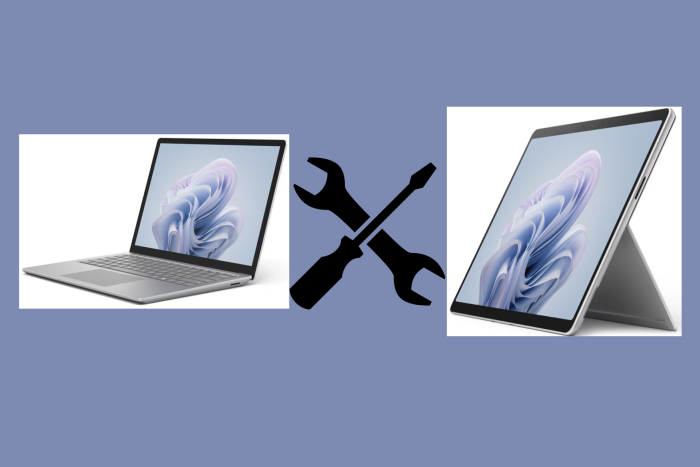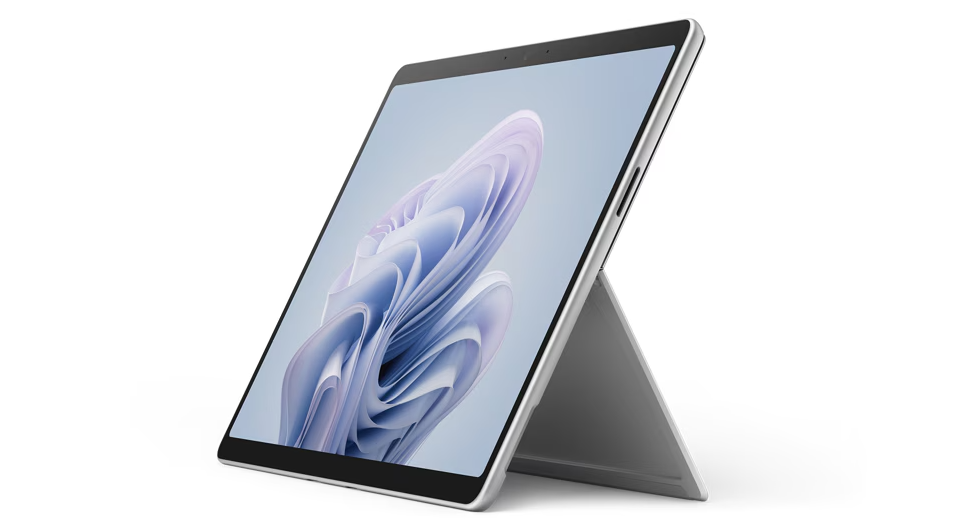You can replace almost all the components from Surface Pro 10 and Surface Laptop 6
Pro 10 and Laptop 6 are the most easily serviceable Surface devices ever
3 min. read
Published on
Read our disclosure page to find out how can you help Windows Report sustain the editorial team. Read more

We wrote intensively about the Right to repair movement and we even conducted a survey that spread the word about the laws that have been adopted in many states, including California, New York, Colorado, Massachusetts and more. Now, we’re starting to really feel the changes, and Microsoft, with their Surface Pro 10 and Surface Laptop 6 set the tone for what’s next in the consumer electronics industry.
Both devices were designed for business and enterprises but they are highly repairable, having an unprecedented number of replaceable components.
They have easy serviceability with clear visual icons and built-in repair instructions.
Nancie Gaskill, general manager of the Surface business, in an interview with The Verge
In the interview, Gaskill also says that the parts will have QR codes on them for easier identification and that will make for the most easily serviceable Surface devices ever.
What components can I replace on Surface Pro 10?
On Surface Pro 10, you will be able to replace the display module, the SSD, the battery, the motherboard (including the CPU and RAM), the Surface Connect pot, the thermal module, the microphone module, the SSD door, the speakers, front and rear cameras, power and volume buttons and the kickstand.
iFixit has partnered with Microsoft since 2021 to provide service tools to consumers and be able to repair their devices. Later, in 2022, after Microsoft lunched Surface Pro 9, iFixit gave it a 7 out of 10 score for reparability.
Recently, Lenovo also worked with iFixit and got a 9/10 reparability score for their latest laptops.
The things are slowly moving in the right direction and soon, you will be able to fix your laptops and replace the components at home, because the manufacturers are forced to allow you access to parts tools and instructions for that.
However, that all comes with an additional cost from manufacturers who might translate into higher prices for us, the consumers. All those QR codes, the easily detachable connectors inside the device, and others don’t come cheap. If until now, the manufacturers struggled to eliminate all those elements for the sake of portability and compactness, now they need to add them back, and all the process is costly.
We have to give it a bit of time until we get the numbers on how the Right to repair impacts the electronics industry. Until then, we should be happy that we can prolong the life of our electronics and don’t have to throw them away. A quick look at the latest e-waste statistics could give anyone a chill down the spine so this is quite a right step forward.
Would you repair your device at home or get a new one instead? Let’s talk about this in the comments section below.









User forum
0 messages